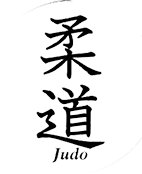Non-Kodokan Kata - Japanese Origin
Here we will discuss other judo kata that were created in Japan, but outside of the Kodokan, including, but not limited to:
Here we will discuss other judo kata that were created in Japan, but outside of the Kodokan, including, but not limited to:
- Nage-waza Ura-no-kata: This kata is a study in counter techniques and is due to Kyuzo Mifune, Kodokan 10 dan. It contains counters for all of the non-sutemi-waza techniques in the Nage-no-kata plus the techniques that Mifune-sensei believed to be omitted from Nage-no-kata.
- Katame-no-Ura-waza: This "kata" (though it was never formally designated such) is a study in counter techniques to the Katame-no-kata. It was consolidated by Kazuzo Ito, Kodokan 9 dan and includes individual moves due to Ito-sensei’s own sensei - Kyuzo Mifune.
- Gonosen-no-kata: A well known kata of counters. This kata includes counter throws for a number of common techniques. Waseda University has a prominent role in the popularity of this kata. Despite some speculation, this kata was not created by Mikonosuke Kawaishi. Slightly different versions of this kata appear to exist.
- Kaeshi-no-kata: A further kata of counters. It was promoted by Yukio Tani (a jujutsu instructor and challenge) wrestler who taught judo in the United Kingdom) in in the early part of the 20th century. Masutaro Otani also had a role in the promotion of this kata and it remains popular to this date within the British Judo Council. Slightly different versions of this kata appear to exist.
- Hando-no-kata: This kata was created by Tokio Hirano and is a study is the application of his wave motion tsukuri/kuzushi system. It is sometimes referred to as Nanami-no-kata or Nanatsu-no-kata or Hirano-no-kata. Slightly different versions of this kata appear to exist.
- [Mifune] Goshinjutsu: This self-defence kata was created by Kyuzo Mifune and is more similar to torite (grabbing the hands) techniques taught to the police than judo.


